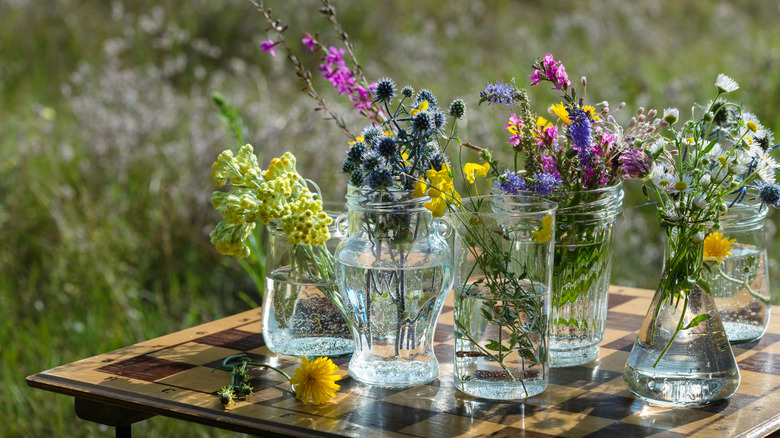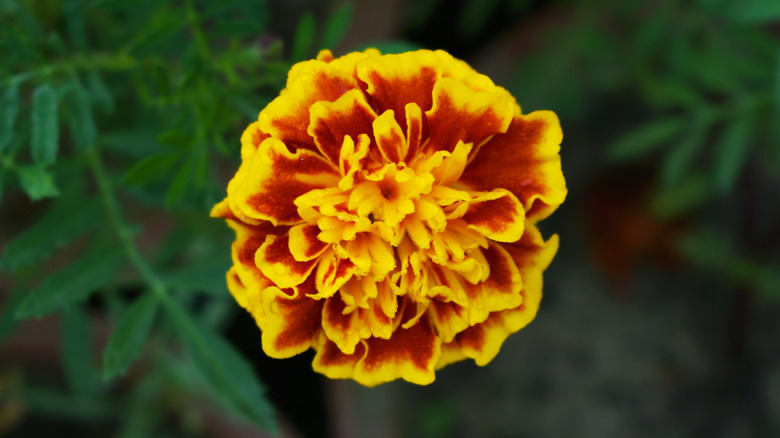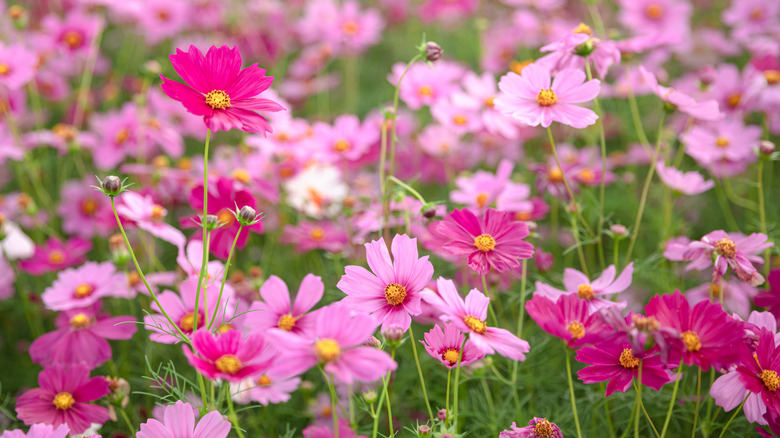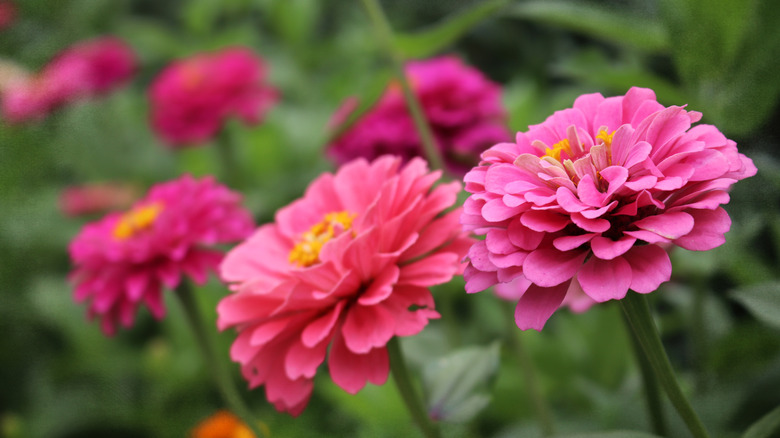The Edible Flowers You Can Grow In A Jar In Your Kitchen
We may receive a commission on purchases made from links.
Whether you want to give cocktails an eye-catching garnish or add some color and texture to your cooking, edible flowers are a fun ingredient to keep in any kitchen. It's possible to buy either dried or fresh flowers, but for a proper farm-to-table experience, you may want to try growing them yourself. Fortunately, many edible flowers don't need a lot of space to grow.
The next time you're left with some empty wine bottles or mason jars, turn them into planters by filling them with water. Then, add a sprig of the edible flower of your choice, pop it on the windowsill or anywhere that gets lots of light, and soon the flower will sprout roots and start to grow. If you take care of your jars of flowers, you'll have access to your own private edible garden. There are dozens of edible flower varieties, but marigolds, cosmos, and zinnias are some of the easiest to cultivate using this method. The added bonus of this hack is that it can instantly add some visual interest to your kitchen. By using different colored and shaped glass jars, bottles, and vases, you can find a combination that perfectly matches your aesthetic.
Make a meal with marigolds
Perfect for adding a bit of a kick to everything from salads to baked goods, marigolds are a wonderful flower to grow on the window sill. There are a few different varieties of this flower, but several are edible, including tangy signet marigolds (Tagetes tenuifolia) and colorful French marigolds (Tagetes patula).
Marigolds are simple plants: give them plenty of sun and water when they're thirsty and they should flourish. Since you won't have to worry about watering your marigold-in-a-jar, you just have to find a nice sunny spot for it to blossom. If your kitchen is super shady, a jarred marigold can still survive, but it won't grow as well. Aside from changing out the water when it gets dirty, the only thing you'll need to do to care for your marigolds is prune them every once in a while. Clipping away damaged or crowded leaves and stems will help the flower thrive. You can also take this time to remove any flowers that have started to wilt since the petals are the most popular part of the marigold to cook with. Before you dig in, don't miss these expert tips to ensure your edible flowers are safe to eat.
Chow down on cosmos
Exciting in both look and flavor, cosmos (specifically Cosmos sulphureus) can add some zesty freshness to your dinner plate and your kitchen decor. They're easy to get a hold of — you can buy a pack of 2,000 cosmos seeds on Amazon for less than $10. Keep in mind that cosmos flowers can grow to be several feet tall, so be sure to clip them back regularly so that they don't take over your windowsill. If you're looking for another bit of foliage to pair with cosmos, see if gorgeous edible celosia is already in your garden.
Cosmos require a lot of sunlight to flourish and grow best in a warm environment, so they may not be suitable for colder kitchens. But, if you find a windowsill that has the right sunny conditions, the cosmos should thrive with little effort on your part. All you have to do is remove any wilted petals or dead flower heads and keep the plants at a reasonable length. While inside the house, cosmos and other flowers should be safe from pests like aphids and beetles, but you can easily thwart any unwanted guests by spraying the plants down with water.
Zinnias add zing to food
If you want to enjoy a truly waste-free kitchen, try filling your windowsill garden with a few zinnias (Zinnia elegans). You can eat every part of these bright, colorful flowers, which are great for giving both drinks and charcuterie boards an elegant garnish. One of the best things about zinnias is that they grow like weeds, so if you're able to maintain the same zinnia plant for a while in its makeshift planter, you'll eventually end up with a bounty of blooms to add to all your dishes.
Like most flowers, zinnias are big fans of sunlight, so place your jar somewhere that will get a lot of rays. Zinnias also don't do well in temperatures below 60 degrees Fahrenheit, so keep that in mind if your home tends to get chilly. Any flower grown indoors will be automatically delightful, but zinnias are especially striking thanks to their long stems, which also make them good for cultivating as a gift or for decorating the rest of your home.
One problem with zinnias, however, is that they tend to develop mold. As with any flower you keep inside, particularly in the kitchen, you should regularly inspect the plants for any disease or mildew, and clip those areas away. Growing plants in the kitchen certainly has its charm, but if you prefer to keep nature outside, there are also plenty of delicious edible flowers to grow in your garden.



